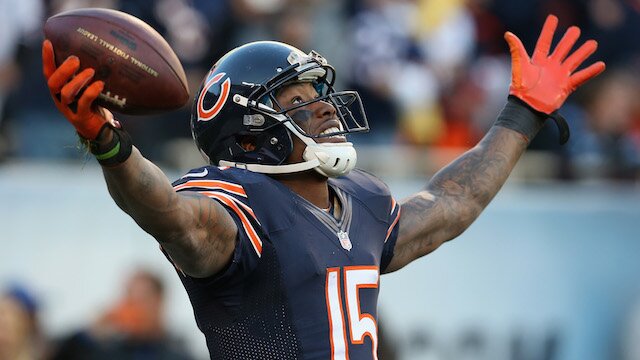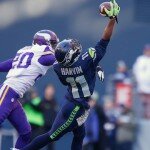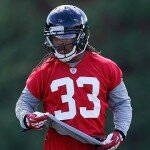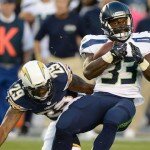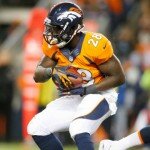More often than not, you win your fantasy football season during the draft. You can have a bad draft and still win through good trades and waiver wire or free agent pickups, but a championship comes much easier if you drafted well. Here is a comprehensive breakdown of the two main factors (and four sub-categories for each factor) to assess when evaluating any player for the coming season.
Physical Condition
A player’s physical condition is important to consider when making decisions in your draft. Every player’s durability and longevity is different due to genes, diet, and thousands of other factors. However, it’s crucial to be aware of important trends.
Age/Career Touches
RBs tend to decline around age 30 or 2,500 career touches, whichever comes first. WRs are often effective until their mid-30s, and QBs can be successful until their late 30s. Be aware of the risk of drafting a player who is close to the end of his respective career, especially in the early rounds. There are always exceptions (see Peyton Manning), but more often than not a player’s effectiveness decreases as he reaches his position’s threshold.
Injury History
Any player can go down with an injury at any time. You shouldn’t base your draft around guessing who will get hurt this season, but you should be cognizant of players who are clearly injury prone. Prior injuries make a player riskier to draft because any time spent off the field during games means fewer fantasy points for your team.
There are two main issues to watch for. The first is when a player is coming back from a major injury. An example of this is WR Jeremy Maclin, who is coming back this year from a torn ACL. Most players require more than one year to fully regain their speed and explosiveness following such an injury. The majority of players coming back from these types of injuries regress a bit like Robert Griffin III last year; very few have a career year like Adrian Peterson following a devastating injury.
The other issue is to actually know how to determine whether a player is injury prone. Jamaal Charles is not injury prone. He missed most of one season from a torn ACL in 2011, but he has only missed two games outside of that year. Miles Austin is injury prone. In the last three seasons, Austin has missed 11 games and has had six “questionable” or “doubtful” tags going into a game. Realize that not every injured player is injury prone, and know how to tell the difference.
Talent
A player’s talent is often hard to evaluate, especially when assessing whether an incoming rookie’s college success will translate to the NFL. Watching game tape helps, but a lot depends on the player’s overall football IQ and innate abilities. Stats like yards per carry are often misleading and can skew how a player is perceived. This may be a cop out, but you just need to watch a lot of NFL games other than just your team’s games (SportsCenter highlights don’t count; they are called highlights for a reason).
Measurables
One method of gauging talent or at least potential for talent is through physical measurements. Height and weight can help determine if a RB can be a successful goal-line rusher or if a WR or TE is a good red zone threat.
Combine results are not the be all and end all to judging player success, but they can give you some idea of a player’s potential. Measurements like hand size correlate to QB accuracy, particularly in colder weather. Jump radius and jump height correlate to more efficient WR catch ratios. All of these elements factor into a player’s physical condition and potential to score fantasy points.
Team Situation
A player’s team situation is just as important if not more so than his physical condition. Football is a team sport, and even the most talented player is limited by his team situation. Usage is often the most difficult to evaluate even if there is a clear player at the top of the depth chart.
Usage
A player’s usage can depend on his team’s offensive scheme. For example, a talented QB like Colin Kaepernick is limited by his role in the San Francisco 49ers’ run-first offense. He has a strong arm, but Jim Harbaugh prefers the power run game, and even Kaepernick’s rushing yards and TDs are limited until needed in the playoffs.
Usage also depends on a player’s role within his offense. Many teams in the league now use running back committees in which different RBs share carries based on situation. For fantasy purposes, it’s important to determine which RB gets the carries, which is the pass catcher that often lines up in the slot and which is the goal-line rusher. For example, Shane Vereen and Pierre Thomas are two RBs whose values are much higher in PPR formats than in standard leagues.
Talent of Teammates
Another important factor is the talent of a player’s teammates. Josh Gordon proved last year that sometimes talent is enough to overcome mediocre talent in teammates. However, I guarantee that his 2013 stats would’ve been remarkably higher had Aaron Rodgers been the QB for the Cleveland Browns.
Here are a few of the many teammate situations to watch for. RB success often depends on how well the QB and the offensive line plays. A good RB gets yards after contact and more than just what’s blocked for him, but good blocking never hurts. He will also see fewer defenders in the box if he has a good QB (see Knowshon Moreno). WR success is also strongly related to QB talent and effectiveness as well as how much coverage the other receivers on his team can draw.
Defense
A player’s opportunities to score fantasy points can also be affected by his team’s defense, though this is harder to predict. Generally, it helps to target WRs with poor defenses, as they may see more deep passes to catch up to opponents. On the other end of the spectrum, a RB may see many more carries and opportunities if his team has a stout defense. Teams prefer to run when they have the lead, and a WR on a team with a good defensive unit may see fewer targets.
Strength of Schedule
Much like it’s difficult to judge a player’s talent, it’s hard to base much off strength of schedule. Many teams with horrible defenses the previous year may surprise everyone the next with a rebuilt unit.
Personally, I only look at strength of schedule when comparing two players with very similar potential. For example, in a vacuum, let’s say that RB X and RB Y are both studs that I have ranked more or less equally. However, if RB X were scheduled to play the Arizona Cardinals in Week 16, I would rather draft RB Y based on schedule.
Remember that team situation is important in that strong teammates can vault a mediocre player to success, and weak teammates can make it difficult for even the most talented players to score fantasy points.
Conclusion
So which factor is more important, physical condition or team situation? It’s very close as both are subject to change at a moment’s notice, but team situation may be worth a bit more in my book. A talented player like Tom Brady wasn’t worth much until he had an opportunity to start, and a gifted player like Maurice Jones-Drew struggled for years on a stagnant offense.
Keep these two factors in mind as you evaluate players for your 2014 drafts. I’ll be coming out with Part 2 shortly, which will explain how to readjust your rankings to account for a player’s draft value.
Meng Song is a writer for www.RantSports.com. Follow him on Twitter @ms0ng, “like” him on Facebook or add him to your Google+ network.




